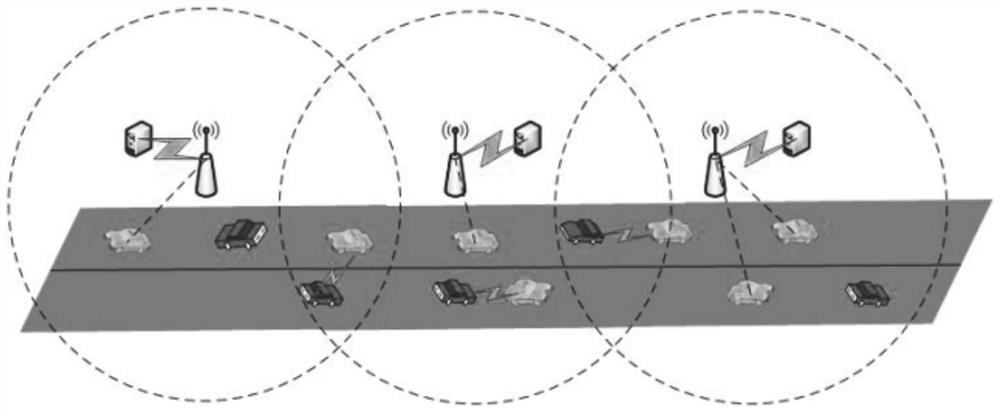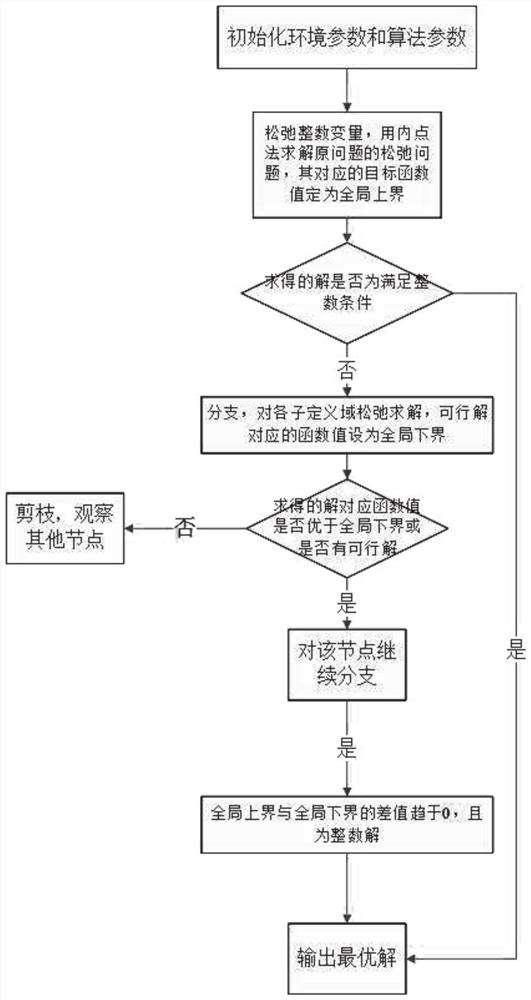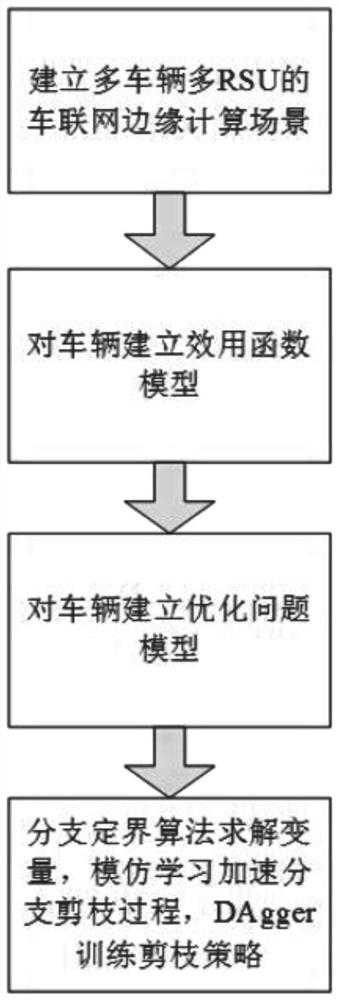Internet of Vehicles mobile edge computing task unloading method and system based on learning pruning
An edge computing and Internet of Vehicles technology, applied in the field of Internet of Vehicles communication, can solve problems such as time-consuming, unreliable result feedback, and interruption of communication links
- Summary
- Abstract
- Description
- Claims
- Application Information
AI Technical Summary
Problems solved by technology
Method used
Image
Examples
Embodiment 1
[0063] Embodiment 1 of the present invention provides a vehicle networking mobile edge computing task unloading system based on learning pruning, and the unloading system includes:
[0064] The vehicle parameter calculation module is used to calculate the vehicle parameters in the mobile edge computing scenario of the Internet of Vehicles; the vehicle parameters include the positions of the mission vehicle and the service vehicle, the distance between the mission vehicle and the service vehicle, and the distance between the mission vehicle and the edge server. distance;
[0065] The unloading parameter calculation module is used to calculate the unloading parameters according to the vehicle parameters; wherein, the unloading parameters include the time delay and energy consumption required by the task-based vehicle to unload the task to the edge server, and the cost of the task-based vehicle to obtain computing resources from the edge server and The latency and energy consumpt...
Embodiment 2
[0101] Embodiment 2 of the present invention provides a method for unloading mobile edge computing tasks in the Internet of Vehicles based on learning pruning, which realizes collaborative unloading of mobile perception based on learning pruning strategies in the vehicle edge computing network.
[0102] In Example 2, the task offloading method for mobile edge computing of the Internet of Vehicles based on learning pruning is more flexible. In the mobile edge computing network of the Internet of Vehicles, vehicles are divided into task-type vehicles and service-type vehicles. Task-type vehicles generate computing tasks and serve Large-scale vehicles can act as mobile edge servers to provide computing services for nearby mission-based vehicles.
[0103] There are two options for task offloading of task-type vehicles. One is V2R, that is, all tasks can be offloaded to the edge server within the coverage of the edge server matched by the roadside basic unit RSU; the other is V2V, t...
Embodiment 3
[0170] The present embodiment 3 provides a mobile-aware collaborative unloading method based on learning pruning strategy in a vehicle edge computing network. The method mainly includes the following processes:
[0171] Process 1: Description of network scenarios and calculation of basic data (distance between vehicles and RSU, distance between vehicles, task offloading delay and energy consumption); Process 2: Modeling of utility functions; Process 3: Problems Modeling; Process 4: The specific algorithm implementation process.
[0172] Several processes of this method are described in detail below.
[0173] Process 1: Realization of network scenario and calculation of basic data (distance between vehicle and RSU, distance between vehicles, task offloading delay and energy consumption). Implement network scenarios and calculate basic parameters (distance between vehicle and RSU, distance between vehicles, delay and energy consumption of task offloading);
[0174] Step 1: Con...
PUM
 Login to View More
Login to View More Abstract
Description
Claims
Application Information
 Login to View More
Login to View More - R&D
- Intellectual Property
- Life Sciences
- Materials
- Tech Scout
- Unparalleled Data Quality
- Higher Quality Content
- 60% Fewer Hallucinations
Browse by: Latest US Patents, China's latest patents, Technical Efficacy Thesaurus, Application Domain, Technology Topic, Popular Technical Reports.
© 2025 PatSnap. All rights reserved.Legal|Privacy policy|Modern Slavery Act Transparency Statement|Sitemap|About US| Contact US: help@patsnap.com



